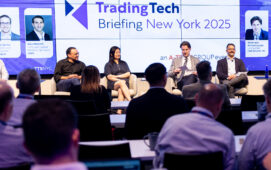Although it is largely focused on the impact of front office technology and developments such as high frequency trading, the International Organisation of Securities Commissions’ (IOSCO) recent consultation report also highlights the need for greater timeliness and transparency into post-trade data. Referencing its recent report on dark liquidity, IOSCO notes that market fragmentation across new venues such as dark pools and developments such as direct electronic access (DEA) have resulted in a number of data related challenges.
“Market fragmentation and the presence of dark liquidity may raise concerns around transparency and the efficiency of the price formation process. For example, competition between trading venues leads naturally to fragmentation of market data as each venue separately publishes the trades that take place on its systems,” states IOSCO in its consultation paper. This has been a common theme during the post-MiFID years, given that opening up the markets to new entrants has meant it is much harder to view consolidated price information.
“Whilst consolidation services exist to integrate the separate data streams, there is a risk that in some jurisdictions some market participants are unable to afford such services and/or the data itself, potentially affecting the price discovery process for these participants. Similarly, the ability to trade on a dark basis may lead to a less efficient price formation process if the level of trading that remains lit is not sufficient to establish a market price that accurately reflects the totality of buyer and seller interest,” notes IOSCO.
In terms of data issues related to direct electronic access, the report suggests that intermediaries should “disclose to market authorities, upon request and in a timely manner, the identity of their DEA customers in order to facilitate market surveillance. In turn, markets should provide their members with access to relevant pre- and post-trade information (on a real-time basis) to enable these firms to implement appropriate monitoring and risk management controls.” The trade and reference data must therefore be in a suitable format and readily accessible in order to meet these real-time requirements.
IOSCO also highlights the need for intermediaries to disclose to market authorities upon request and in a “timely manner” the identity of their DEA customers in order to facilitate market surveillance. Customer and client data must therefore be kept in an easily accessible and consolidated system in order to report this back to the authorities in the required timeframes. This principle is essentially aimed at ensuring that market authorities have the ability to identify the source of orders or trades for market surveillance purposes.
The vast majority of the paper discusses and suggests recommendations for requirements to be introduced for front office, risk management and trading systems. However, in order to meet these reporting requirements there is a need to enhance the underlying data management infrastructures supporting these risk and trading systems.
Subscribe to our newsletter




